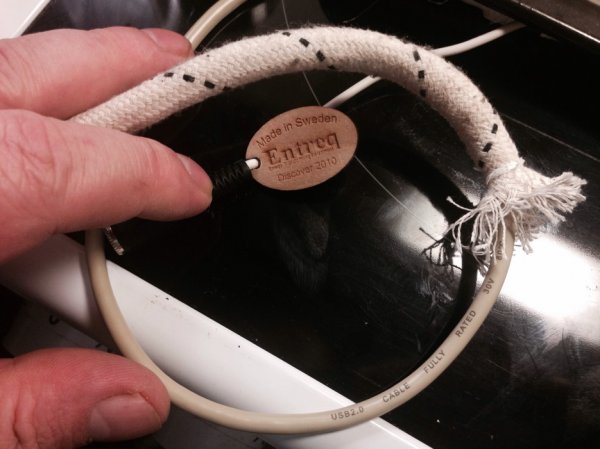This is a review and detailed measurements of the ultra cheap, "vintage," retail RCA cable. A member kindly sent it to me. It is not available anymore but I see two-packs on ebay for $4.
View attachment 203024
The cable reminds me of the free ones you used to get in audio gear. It fits rather loosely on especially when you are used to today's stiff RCA plugs. The wire is still flexible and feels like it would have when new.
Recoton Cheap RCA Cable Measurements
The Audio Precision APx555 analyzer I use for testing has an internal "loopback" where using a relay, shorts inputs to outputs. In other words, it is the shortest and most optimized path between input and output. Let's measure that performance with 2 volts using 22 kHz as bandwidth and 1 kHz tone:
View attachment 203026
We see the stellar performance that we expect from Audio Precision. Only a second harmonic is visible at astonishingly low -148 dB! This is good 30 dB below threshold of hearing. SINAD measurement is therefore noise bound to the tune of 121 dB -- again about 6 dB lower than threshold of hearing.
Now let's switch the internal loop back with our cheap RCA cable:
View attachment 203031
That's right. Not a thing has changed. Same noise floor. Same distortion profile. Same output voltage.
OK, that is one tone but let's throw 32 tones at it to simulate "music:"
View attachment 203032
It can't be more identical than this. If turned on both graphs at once, you could not distinguish one from the other when overlaid.
Let's widen the bandwidth to 90 kHz and sweep every audible frequency and measure distortion and noise:
View attachment 203035
Again, identical performance to "no wire."
Folks at this point complain that "something is happening in timing domain." So let's run a step response with 1 MHz bandwidth (25X audible bandwidth) and see what happens to our edge:
View attachment 203036
Again, the two graphs land right on top of each other.
We could keep testing but you get the picture hopefully.
Conclusions
Electrically the Recoton RCA cable is as good as "no wire" internal loop back in the analyzer. So it doesn't get any better than that. In all performance vectors we get the same results. Even measuring up to 1 MHz, timing test shows the same performance.
From usability point of view, the connectors are a bit loose for my taste (although you could pinch the outer ring to fix). And cable is too thin to withstand repeated connection or disconnection. If these are not an issue with whatever cheap/free cable you have, you can feel confident that there is no performance impact on your audio equipment in using such.
Indeed, personally I use such cables when I need one that is not so stiff or too long. They take up much less space and are easier to route.
Next time someone shames you that your RCA cables are too thin and dirt cheap looking, you can point them to this review to show that they give you all the performance you or anyone else needs!
-----------
As always, questions, comments, recommendations, etc. are welcome.
Any
donations are much appreciated using
: https://www.audiosciencereview.com/forum/index.php?threads/how-to-support-audio-science-review.8150/



